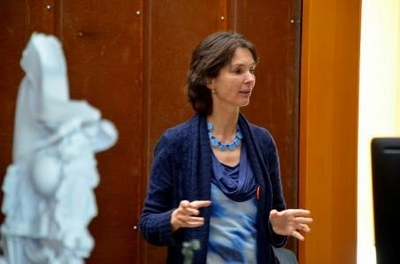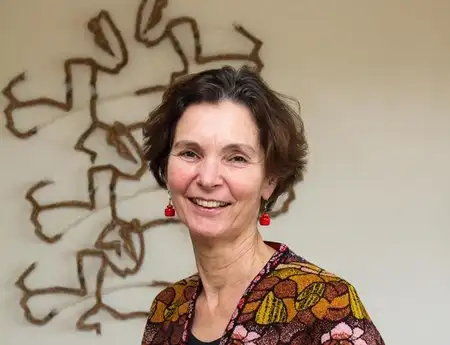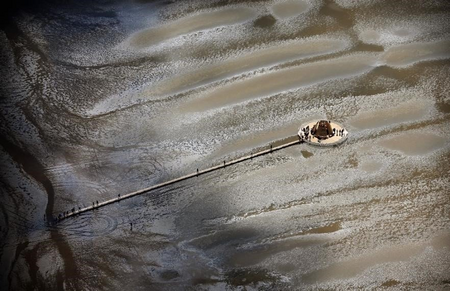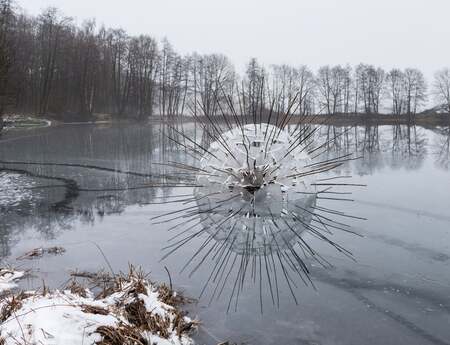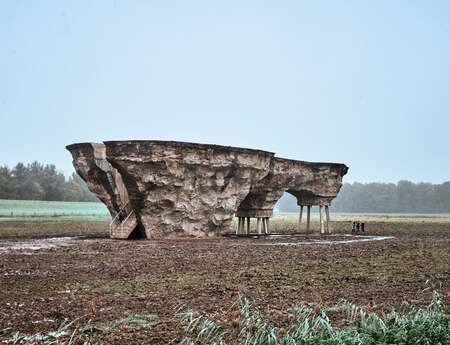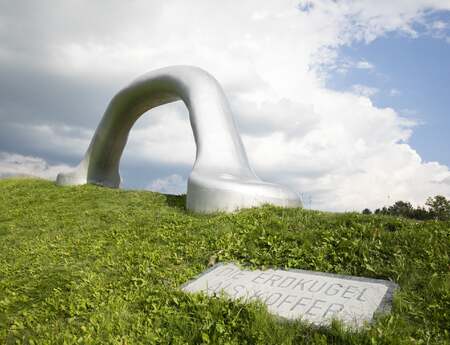Sense of Place, Site Specific Art in the Coastal Area of North-Netherlands
How to feel at home in a globalised world? With Sense of Place, Joop Mulder opens our eyes to the soul of the place that was so dear to him: the Frisian landscape and the Wadden area of the Northern Netherlands. "I give people a tool to connect with this special landscape".
Forty years ago, Joop Mulder (1953-2021, NL) conceived the Oerol Festival. This renowned theatre and art festival takes place against the beautiful backdrop of the island of Terschelling. Sense of Place evolved from this. Since 2018, instead of location theatre, Mulder has focused on site-specific art, in which the landscape gets the leading role. This year Joop Mulder passed away unexpectedly, but his visionary Sense of Place will continue.
As an in memoriam for sculpture network member Joop Mulder, below you find the interview with Anne Berk for Het Financieele Dagblad in 2018.
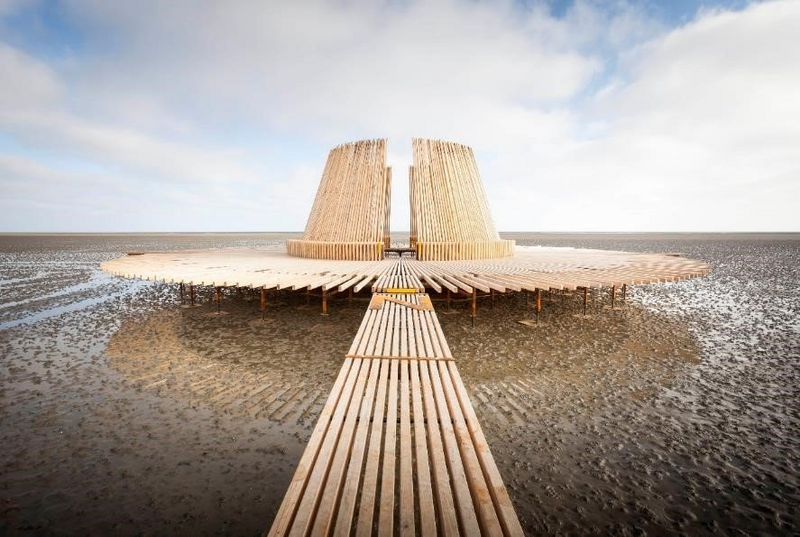
Sense of Place
The Netherlands is located where land and water meet. The largest part of the 'Low Countries' lies below sea level, and has to be battled against the sea.
With Sense of Place, Joop Mulder wanted to raise awareness of this special place and nature. Instead of the Frisian cities, he focused on the villages and the unique wadden coast in the Northern part of the Netherlands.
"I want to show the Frisian landscape from a human perspective. We have been living on the bottom of the sea for centuries. This is where water management originated. Impoldering, water management, dykes and salt marshes. The Frisians can be proud of that".
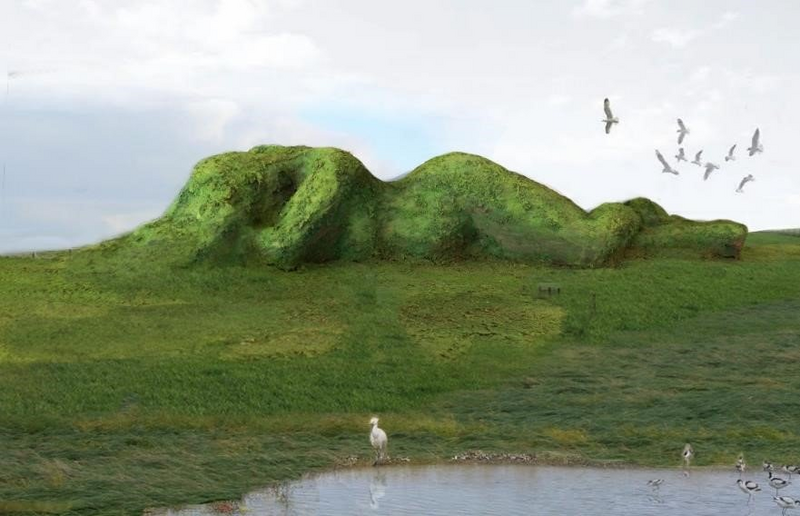
The interplay of natural forces
De Streken really is 'slow art'. Take six hours and watch the tide rise on Mark van Vliet's star-shaped bench, which at high tide, unfolds like a flower. It creates a connection between the sand flats, the sun, and the horizon with the illuminated points of the compass and the tide, celebrating the forces of nature.
Mulder is not interested in aesthetic art, but in projects that create awareness of the changing landscape. Because nature is not static. Besides the everlasting game of wind, water and earth, man has an influence as well. For better and for worse.
"Monks were the first dike builders. They battled the sea," says Mulder. "But the Afsluitdijk is an ecological disaster. As a result, the bond with the sea disappeared. Why not make soft dykes and salt marshes?" This is how the idea came about to build a 100-metre-long! dyke with the curvaceous shapes of a woman.
Dike of a Woman was designed by Nienke Brokke, the execution will be in the hands of engineering company Dijkstra Draisma from Dokkum. After much experimentation, the body will be made of potato starch, smeared with clay, and then sown with grass. "Will grass grow on her buttocks?" Mulder wondered.
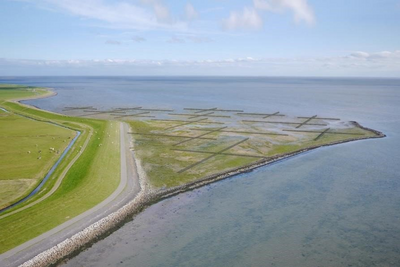
Wadland (2014) was an experiment during Oerol that will hopefully have a sequel in the Mondriaankwelder. Artist Bruno Doedens and landscape architect Machiel Spaan, together with 200 students, specialists and volunteers, wove long ledges of willow twigs. In doing so, they elaborated on a centuries-old tradition of putting brushwood in the ground to promote siltation. So far, nothing new.
In order to emphasise the impact of man, the choice fell on Mondrian's composition, Pier and Ocean (1916-17). "Land reclamation is not the priority here. It will be a snack bar for birds," Mulder gloats. "All sorts of things get stuck in between the tides. And the wind makes the willow twigs disappear further and further under the sand. In 25 years' time, there will probably be nothing left to see. Nature always wins. That makes you humble as a human being".
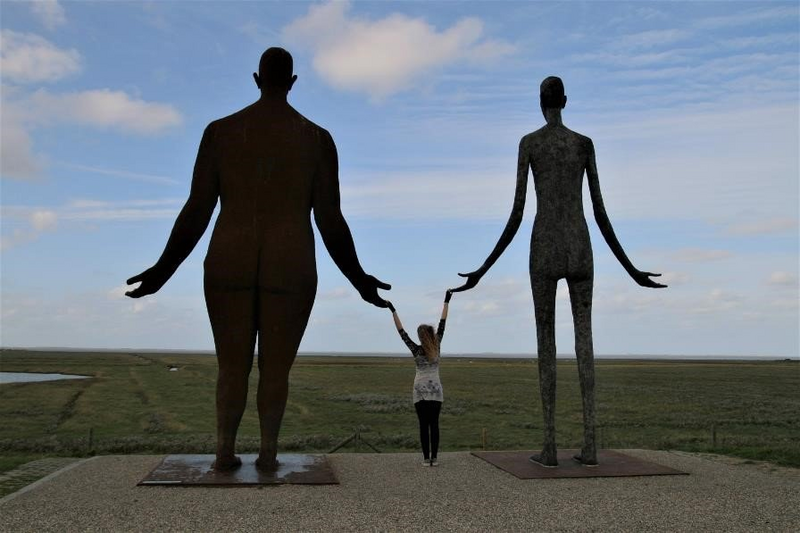
Sense of Place today
The first monumental work of Sense of Place to be realised is Wachten op Hoog Water (2018) by Jan Ketelaar near Holwerd. He welded two female figures of 5 metres high. The voluminous and the skinny figure symbolise the rich and the poor part of the world. Whereby the visitor is invited to connect them, by reaching out to them.
The photo installation and walking route Dobbepaarden (2018) depicts a spectacular rescue operation for 150 horses. They were grazing in the area outside the dikes. On 31 October 2006, they were trapped by the sea during a flying storm. Furthermore, there is the tour Bildtstars and Eigenheimers, kicked off with ten giant portraits of local potato farmerswith stories about the local history of potato cultivation.
Currently, work is being done on a definitive location for De Streken by Marc van Vliet, the realisation of the Terp fan de Takomst by Observatorium Rotterdam. For the other projects, we are waiting for the right permits in this protected nature reserve.
From landscape theatre to site-specific art
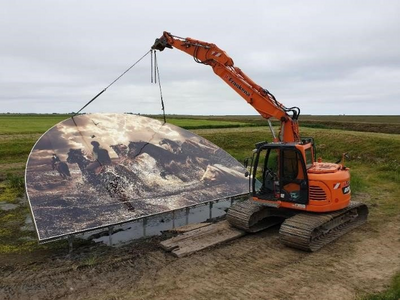
Joop Mulder was a born Frisian. His father had a small laundry and was mayor of Bolsward. It was there that Mulder first went to the theatre with his class, and his love for the theatre was born.
Less well known is that Mulder wanted to become an artist. But when he wanted to go to art school, his father objected. Mulder ended up being the landlord of café de Stoep in Midsland, Terschelling, and from 1982 onwards here he organised art projects and street theatre.
"I wanted to do location theatre on the beach of Terschelling. But that is a European nature reserve. At first there was resistance from the nature conservationists. But when it turned out that the festival-goers behaved properly, I won their trust. For companies, it was a great challenge to play outside. There was already site-specific theatre being made in empty buildings, but I was the first to develop landscape theatre".
"I have always been in search of the connection between nature and art. After 36 years, I said goodbye to theatre. In the art projects of Sense of Place I give nature the leading role".
Further information: https://www.sense-of-place.eu/en/
Author: Anne Berk
Anne Berk is a curator, art critic and educator, based near Amsterdam, NL.
She is also vice-president and coordinator for the Netherlands for sculpture network.
Cover picture: Marc van Vliet, De Streken. Aerial Photo: Catrinus van Veen ANP

